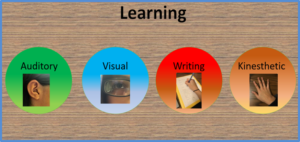People have different preferences for how they want to follow what is going on around the scientific world without having to spend too much time seeking for information. However, seldom scientific information is presented in all possible formats that could satisfy diverse people’s preferences. Specifically, some information comes only in either auditory, writing, kinesthetic or visual. Although people may want to keep up with scientific events, particularly in topics that are of general concern, most of the time, that information comes in formats not always preferred by some groups.
Personally, I have noticed that visual formats help me to understand the information faster and a more complete way. Using visual aids, I am going to be discussing what brought my attention more than anything else these past weeks.
News about an outbreak caused by Coronavirus has been the top story during the last weeks. It started in China in December 2019 with a few hospitalized cases with respiratory infections. It originally spread throughout the city of Wuhan, but currently we are seeing cases in 26 countries around the world. As of today (February 7, 2020), there are more than 31,503 confirmed cases and it has already taken the lives of 638 people (5). The virus causes a severe illness – most confirmed cases were hospitalized– and could lead to permanent sequelae. The rate of premature death among confirmed cases is about 2%. Very little is still known about how the virus circulates and there is no vaccine to prevent infection nor known medications to treat its symptoms.
Sources have explained that this virus had some relation to seafood or live animal markets, which meant that the virus could spread from animals to people (1). Eventually they realized that some affected people have not been in contact with animal markets indicating that the virus could be transmitted by person-person contact. (1)
Genetically, the coronavirus, as seen in the picture above, is known to have spikes on their circular surfaces. Fehr and Perlman have concluded and identified that Coronavirinae has the largest identified RNA genome (2).Coronaviruses are generally a single strand of RNA and as the American Society of Microbiology mentions that since this family of viruses have a high frequency of recombination, this leads to problems when trying to detect the infection (3) Known as CoVs, these viruses can cause severe respiratory disease in animals and even humans. As in this outbreak, coronaviruses are known to be transmitted among people and animals, otherwise known as zoonotic
Symptoms are very similar to common respiratory infections. That can include runny nose, fever, cough and other similar symptoms (4). Since the symptoms are quite like common respiratory infections, it is harder to identify the Coronavirus or 2019-nCoV without a full-work laboratory test. In the presence of these symptoms both patients and doctors could believe it is just a regular respiratory infection. Moreover, since these months are considered high on influenza activity, these cases may well be confused for flu cases which could also lead to a severe illness.
While the immediate risk of this new virus to the US public is believed to be low at this time, in order to prevent a Coronavirus infection, the World Health organization (WHO) and the US Centers for Disease Control and Prevention (CDC) advise to stay away from unprotected animals and possibly other infected people or with cold or flu-like symptoms. Additionally, frequently cleaning hands with soap and water or alcohol-based sanitizers and not to travel to places with active outbreak are important measures to prevent respiratory infections.
Now, the main concern from the public health organization nationally and internationally is to reduce the spread of the Coronavirus. More cases are likely to be identified and probably in more countries around the world. Since this epidemic is rapidly evolving and changing, there are still various uncertainties that will take time to figure out and much longer to put in place effective measures to monitor the disease, identify cases, isolate infected people, treat sick people and prevent new infections.
References
- 2019 Novel Coronavirus (2019-nCoV) Situation Summary. (2020, February 7). Retrieved from https://www.cdc.gov/coronavirus/2019-nCoV/summary.html
- Fehr, A. R., & Perlman, S. (2015). Coronaviruses: an overview of their replication and pathogenesis. Methods in molecular biology (Clifton, N.J.), 1282, 1–23. doi:10.1007/978-1-4939-2438-7_1
- Rohde, R. (2020, January 31). 2019 Novel Coronavirus (2019-nCoV) Update: Uncoating the Virus. Retrieved February 3, 2020, from https://asm.org/Articles/2020/January/2019-Novel-Coronavirus-2019-nCoV-Update-Uncoating
- Yadav, N. (2020, January 26). What are Coronavirus’ symptoms and why is it dangerous? Retrieved February 3, 2020, from https://www.indiatvnews.com/lifestyle/health-what-is-coronavirus-symptoms-explained-china-new-virus-latest-health-news-581546
- Novel coronavirus. (2020, February 6). Retrieved February 7, 2020, from https://www.ecdc.europa.eu/en/novel-coronavirus-china









